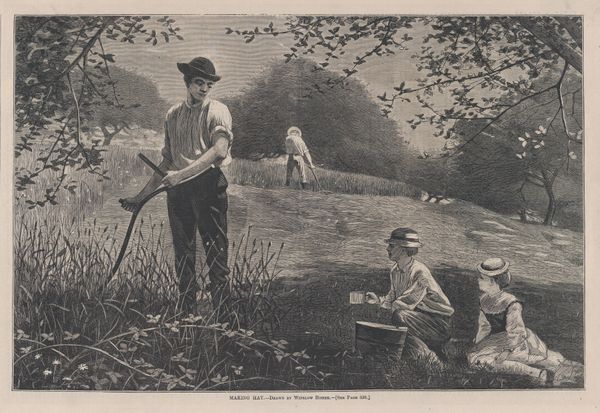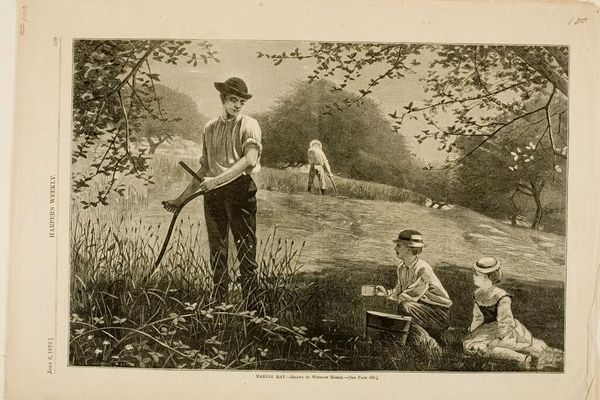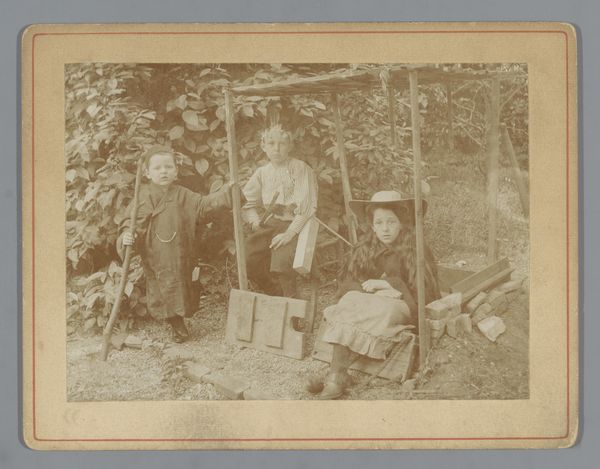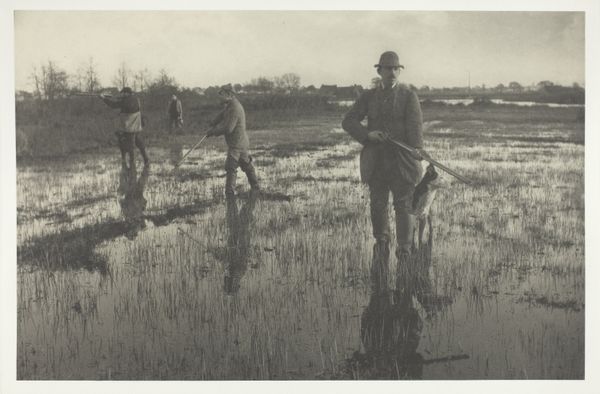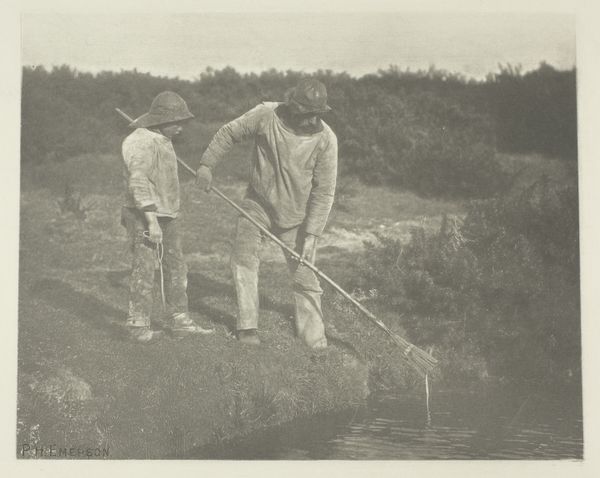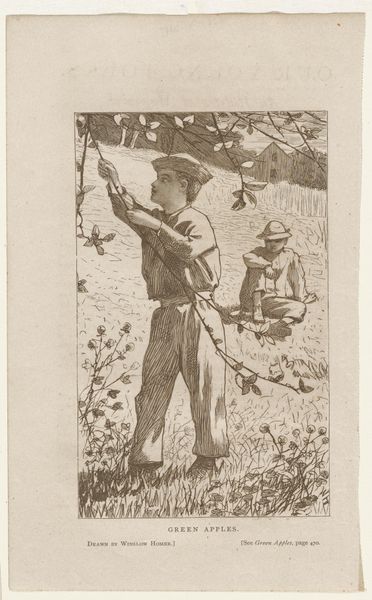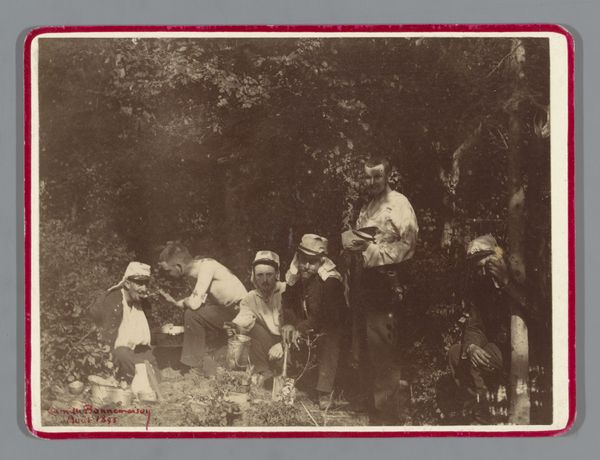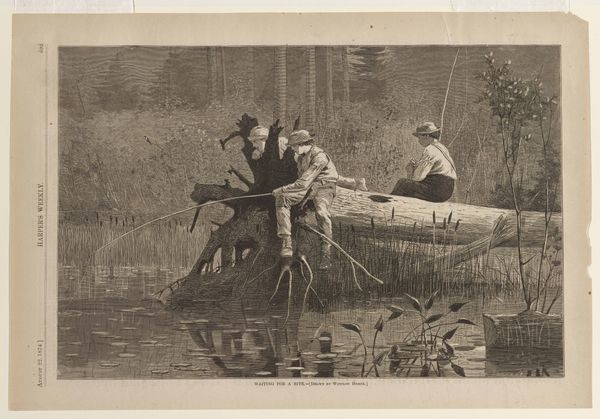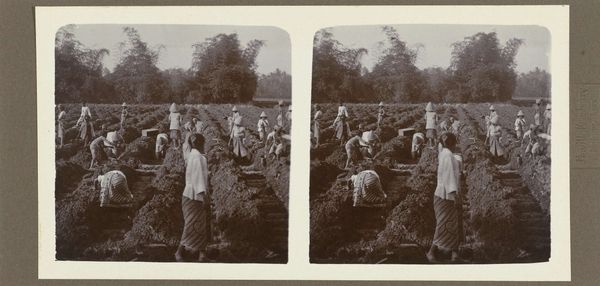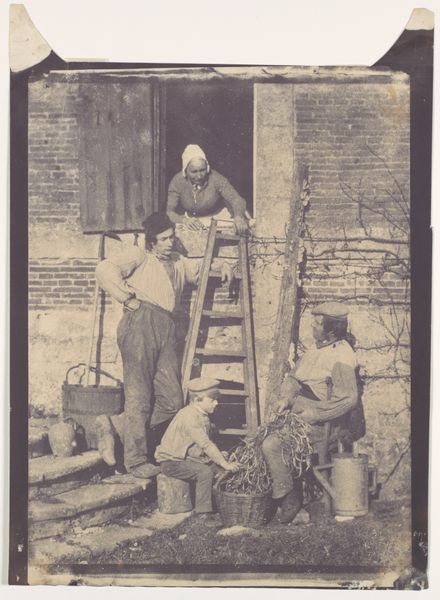
print, woodcut, wood-engraving
# print
#
old engraving style
#
landscape
#
historical photography
#
woodcut
#
19th century
#
united-states
#
genre-painting
#
wood-engraving
Dimensions: 9 1/8 x 13 7/8 in. (23.2 x 35.2 cm)
Copyright: Public Domain
Curator: "Making Hay," created in 1872 by Winslow Homer, is a wood engraving held here at the Minneapolis Institute of Art. The scene captures figures engaged in a rural summer activity. Editor: The immediate impression is one of idyllic American pastoral life, rendered in the intricate lines characteristic of the printmaking process. There is an immediate feeling of warmth and simpler times conveyed. Curator: Certainly, the scene reflects a romanticized version of agrarian life. The engraving, likely circulated widely through publications, taps into a cultural memory of America’s rural past and an emerging national identity rooted in nature and labor. One that was consciously being promoted and sold to people across social classes. Editor: I'm intrigued by the symbolic elements embedded within the composition. Look at the central figure, seemingly suspended between labour and rest. Does this represent the era's attitude toward labor and leisure? And note that other figures almost look like "angels" overlooking them from the back! Curator: Absolutely, these compositions were intended for widespread viewing and consumption, meant for framing. The themes embedded in Homer’s work were important cultural lessons to reflect on: hard work, leisure time well spent, family life and the land! The placement of that central figure – physically set apart from the background labor yet still integrated with the field itself is telling; his work-worn physique serves almost as a testament to nature. And yes! that group in the background feels somehow "divine" adding this strange layer of oversight from the heaven! Editor: The wood engraving, itself, feels significant. A print is easily disseminated; what audience was consuming it? I am wondering what they would be telling each other. Were they farmers themselves, buying this picture as some self-portrait? or was it only the elite that were reminded to not feel too sorry for themselves! It reflects a fascination with this rural setting and ideal even amongst rising urbanization and industrial development. Curator: Very good point to consider the political power of images disseminated via media as print in this age, when photography had not reached mass access as media source. They were most probably being disseminated among all social stratas. The symbolic representation is what matters when we talk about power: the representation of labour being virtuous and honest! Editor: Seeing how deeply an ostensibly simple image speaks to such powerful, foundational cultural myths truly gives one pause. Curator: It's a potent reminder how seemingly benign genre scenes can reinforce deep-seated social narratives, presented through such a ubiquitous format. It makes you see imagery in an entirely different way!
Comments
No comments
Be the first to comment and join the conversation on the ultimate creative platform.
